The 10 Best Bikes You Can Buy From Cannondale
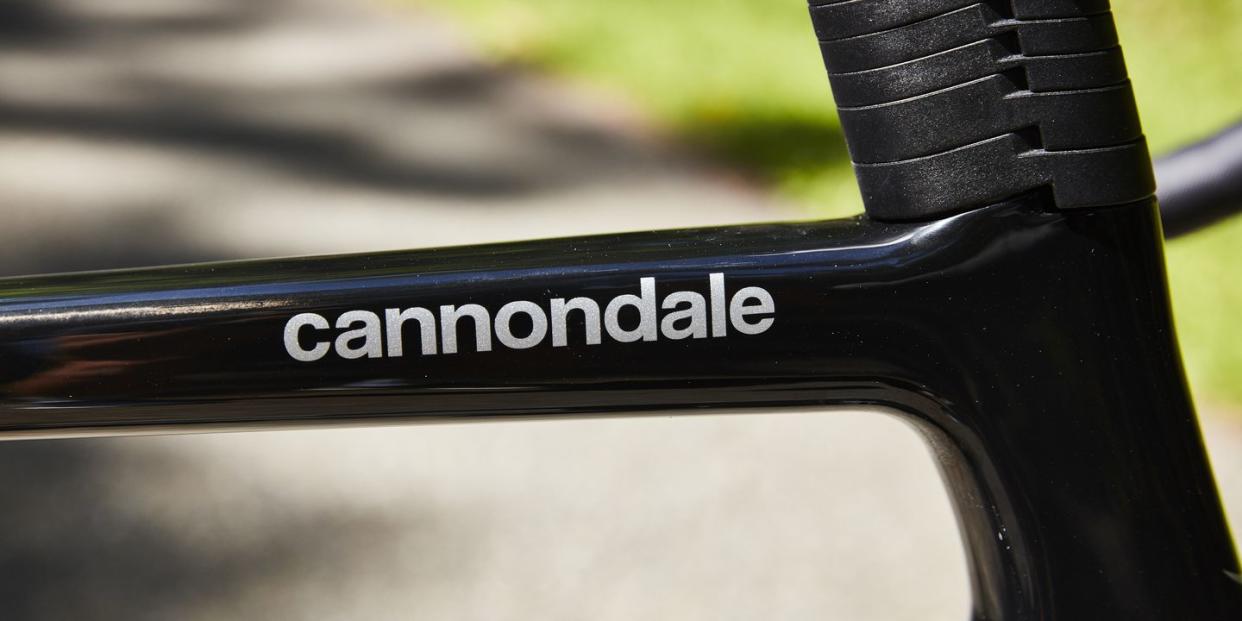
Joe Montgomery founded Cannondale in 1971 above a pickle factory in a small town in Connecticut, naming it after the train station across the street—but it wasn’t a bicycle company, at first. Initially, Montgomery and a handful of part-time employees made backpacks, apparel, and bike-touring bags. Then Montgomery decided there had to be a better way to carry gear while riding, so he built the first high-performance trailer that could be towed by a bike, called the Bugger. Cannondale hasn’t stopped innovating since.
More Than 35 Years of Bicycle Innovation
In 1983, the company introduced its first bike, the ST-500—a revolutionary road bike that eschewed the industry-standard steel for oversize aluminum because it was lighter and stiffer. This was a fundamental change for the industry, forcing the rest of the major bike makers to play catch up.
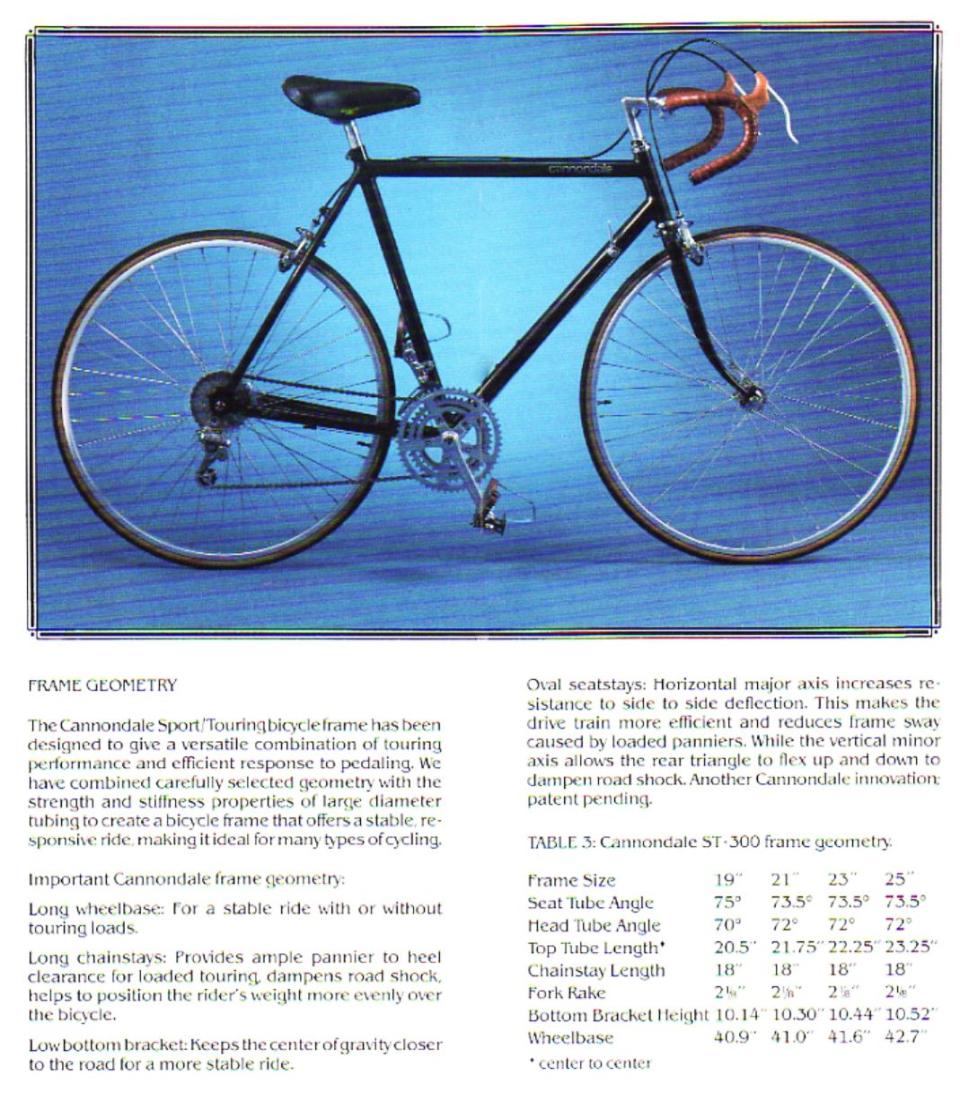
This trend continued in 1996, when Cannondale introduced the CAAD series (Cannondale Advanced Aluminum Design) of road bikes, which remain in the brand’s line today. Indeed, while many bike makers only utilize aluminum in their more budget-friendly offerings, Cannondale continues to produce one of the best aluminum race bikes on the planet: the CAAD12. These competition-ready steeds are purchasable with every Shimano groupset from 105 to Dura-Ace, and the more entry-level CAAD Optimo models that are equipped with lower-cost Shimano groupsets like Shimano Tiagra, Sora and Claris.
“If there’s one defining characteristic of the brand that has driven us through the years, it’s our willingness to say, ‘F*** it. Let’s give it a go,’” says Murray Washburn, Cannondale’s Global Director of Product Marketing. “From the earliest days of the brand, we’ve always had this maverick spirit, this restless, confident optimism that there is always a better way to do things, and an unusual appetite for risk in pursuing those better ways.”
After being a part of the bike industry’s move away from steel, Cannondale introduced an early version of the mountain bike, called the SM-500, with 24-inch wheels in the back, 26-inch up front, and a high bottom bracket to avoid East Coast rocks. Later, it introduced the world to dual suspension. Over the years, the company reinvented the bottom bracket…twice…first with a hollow crank and external bearing BB, then with the BB30, which it open-sourced to the entire industry.
Suspending disbelief
But if Cannondale is known for pushing the standards in one category, it would have to be with suspension, first creating the Headshok (suspension in the head tube), and then the Lefty single leg suspension fork, which, depending on who you ask, is either revolutionizing or pissing off the bike world.
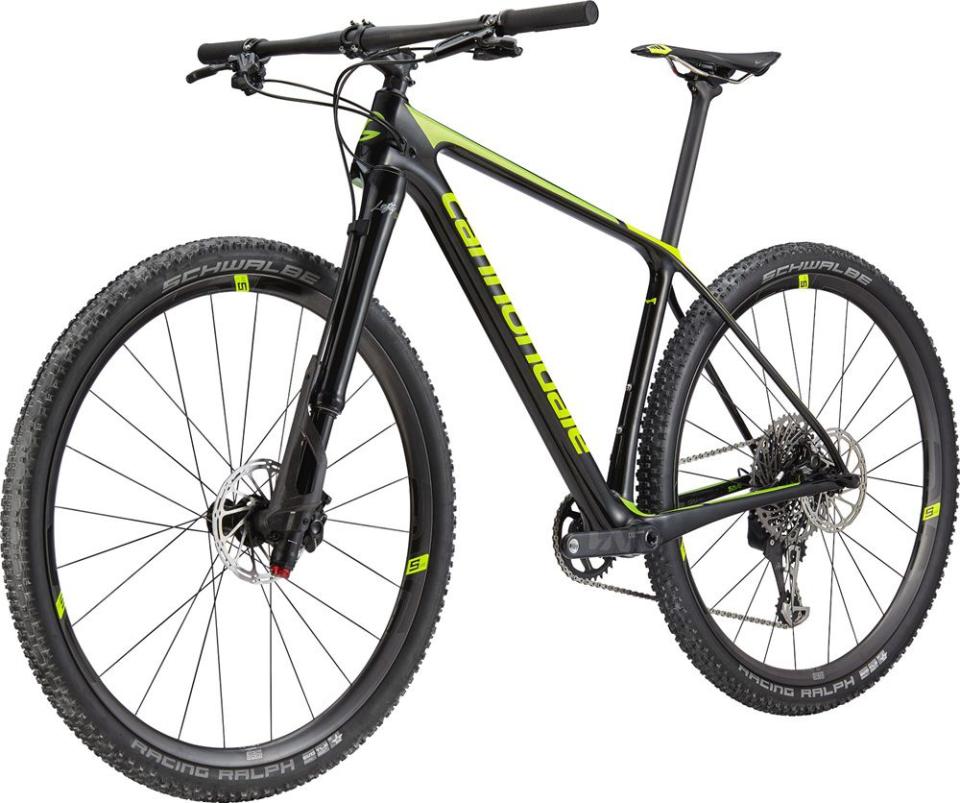
The XC Lefty Ocho was redesigned in 2018, moving from a dual-crown to a single-crown fork and dropping 250 grams of weight from the previous model. And road bikers are no longer left out; Cannondale put the 30mm Lefty Oliver on its adventure bike, the Slate, and a rigid version of the Lefty Oliver on its commuter, the Bad Boy. And in 2019, they launched the new Topstone Carbon gravel bike platform, where a full-frame leaf-spring system with a single pivot helps smooth out bumps in the road.
What else is new for 2019
Perhaps the biggest news, though, is the recent launch of the SystemSix aero road bike, which filled in the final missing piece in Cannondale’s road line-up. Taking cues from its SuperSlice time trail machine, SystemSix designers utilized a systematic approach where wheels, frame, fork, seatpost, stem, and handlebar all conspire to make you faster. And not just on flat terrain. Cannondale claims its wind cheater is quicker than any lightweight climbing bike on grades up to 6 percent. The SystemSix frame is also fairly light, coming in at 981 grams for a size 56cm.
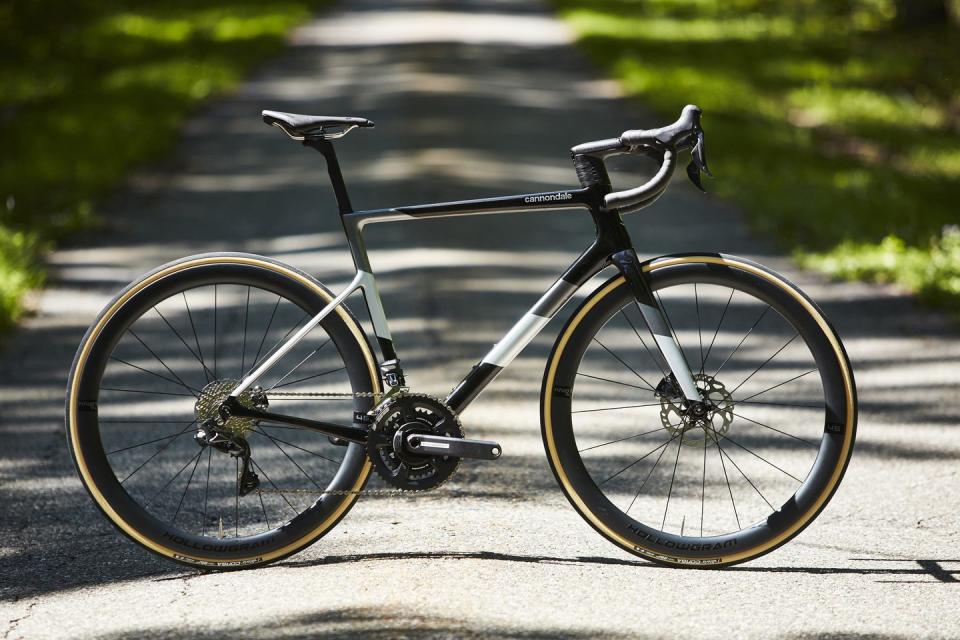
Also rolling out this year is Cannondale’s new line of drop-bar e-bikes, the Synapse NEO, which are among the first to utilize Bosch’s third generation Active Line Plus e-bike system that is smaller than previous offerings and has less drag. The Neo also has a double-chainring set-up, so you get the same gearing as on a standard Synapse. This was in part enabled by the bike maker’s Asymmetric Integration (Ai) Offset rear end, which also permits shorter chainstays that also deliver more nimble handling and clearance for up to a 700x35mm tire.
Also newsworthy: the Topstone with its simple but effective rear suspension system, and a new version of the brand's versatile SuperSix Evo road race bike.
Now, to fully explore what Cannondale is currently producing, here are 10 of our favorite models from the brand.
Jekyll 29 1
Capable — and versatile — big wheeled enduro rig
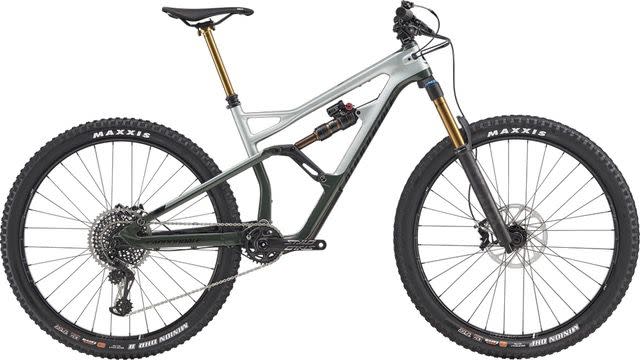
Price: $6850
Read Full Review Learn More
Billed as a pure-bred enduro race bike, the Jekyll 29 1 features a slack 65-degree head angle and 150mm of travel front and rear. But as is often the case with Cannondale, this bike has a trick up its sleeve in the form of a switch that allows its rider to reduce rear travel to 120mm. Pair that with a steep 75-degree seat tube angle, and you have a bike that’s quite capable of clawing its way up techy climbs. The shorter travel mode is also great on less technical trails, giving the bike a snappier feel. Think of it as getting two bikes in one.
Synapse Neo SE
Built to explore beyond the paved and predictable
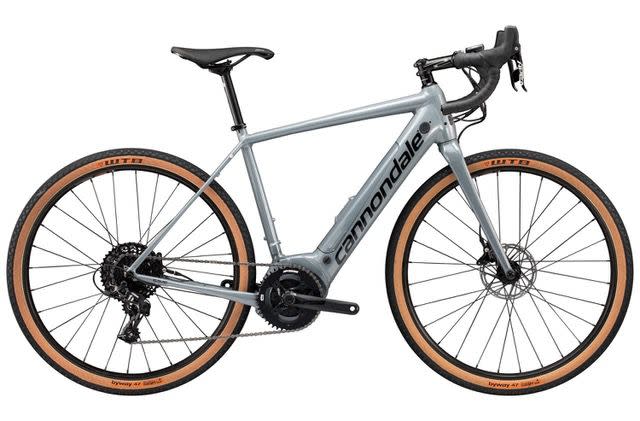
Price: $4400
Read Full Review Learn More
Outfitted with a SRAM Apex 1x drivetrain, 650b wheels, and cushy 47mm tires, the Synapse Neo SE is ready for the dirt road less traveled. And thanks to its Bosch Active Line Plus motor that delivers up to 250 watts of pedal assist power (to a maximum speed of 20 mph) you don’t have to be a Dirty Kanza superstar to venture off the beaten path. This motor features smoother engagement than previous models, meaning the pedal assist is so seamless and quiet you’ll almost forget you’re on an e-bike. Until you need that extra boost, of course.
SuperSix Evo Hi-Mod Disc Ultegra Di2
Aero, comfortable, and highly versatile race bike
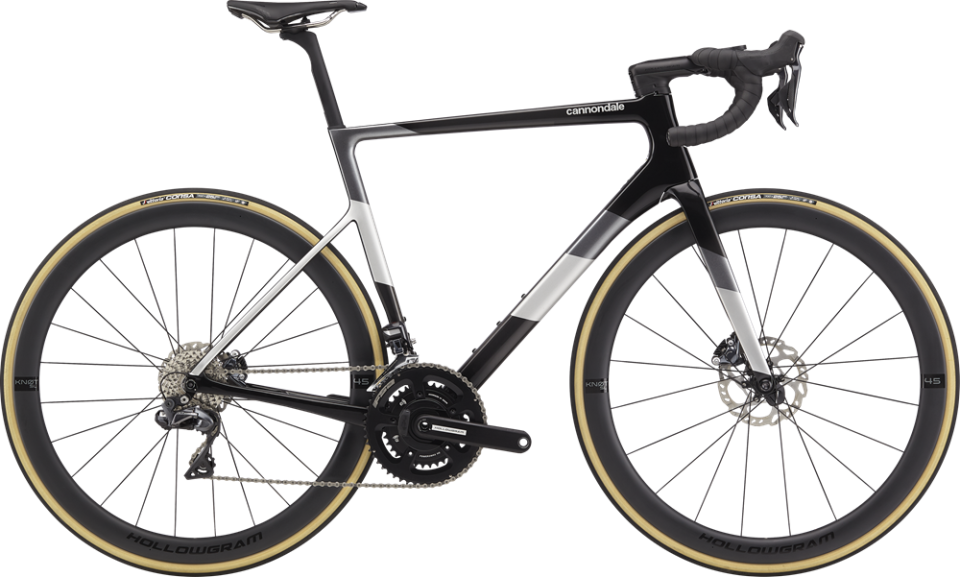
Price: $7750
Read Full Review Learn More
Launched in June of 2019, Cannondale’s revamped flagship race bike is designed to cheat the wind thanks to full internal cable routing and truncated airfoil tubing that blends the drag-reducing benefits of a full airfoil with the lightness of round tubing. Aero gains don’t come at the expense of comfort, though. A new carbon fiber seatpost is designed to increase compliance, while the frame’s seatstay junction was lowered to further enhance this bike’s bump taming abilities. There’s also clearance for up to 30mm tires on the disc brake models, making this a race ready bike that won’t beat you up on those long days in the saddle. High-modulus carbon frames are available with Shimano Dura-Ace Di2, Ultegra Di2, and mechanical Dura-Ace drivetrains, with the option to add a built-in Power2Max power meter for an additional $490.
Topstone Carbon Force eTap AXS
Built for comfort — and speed
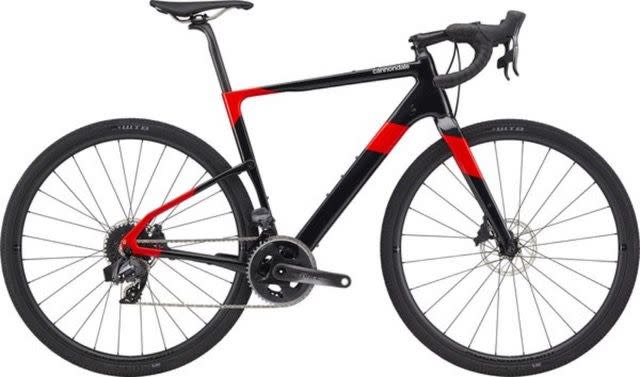
Price: $6500
Read Full Review Learn More
Among the most progressive gravel bikes to hit the market in 2019, the Topstone Carbon features Cannondale’s new Kingpin rear-triangle leaf-spring suspension system to smooth out bumps in the road. The system works via engineered flex in the frame, providing comfort and added traction without negatively impacting pedaling efficiency. Carbon Hollowgram rims add to the light and nimble feel of the bike, and the integrated SAVE handlebar and stem combo have slight aero styling more reminiscent of road bikes than gravel bikes.
SuperX Force 1
Learn More
Price: $4,100
A cyclocross racer that can double as a gravel grinder
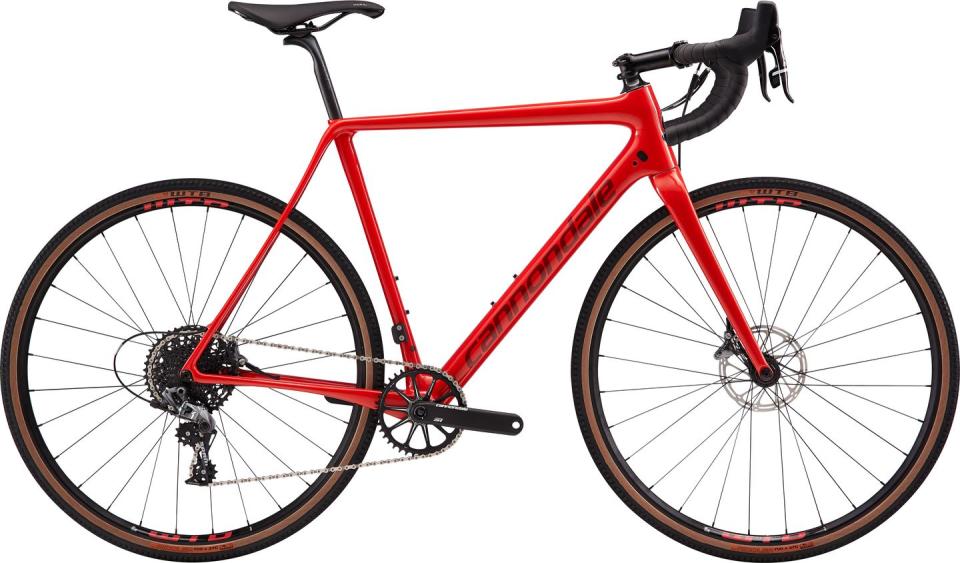
Okay, the name sounds like a movie from the Marvel Universe, but it’s actually Cannondale’s top-end cyclocross ride. Better yet, it’s really two bikes in one: a fast weekend racer and a capable gravel bike. Cannondale gives the SuperX “Outfront Steering Geometry,” which basically means it has a slack front end with greater fork offset for more stability on the descents. The BallisTec Carbon and integrated cranksets offer an incredibly stiff, light ride, while a noticeably short chainstay affords better traction on the climb. All of this is great for racing. But the bike’s upright position and massive tire clearance (up to 40mm) means you can use this bike as your gravel grinder as well. Choose from SRAM Force 1 ($4,100) and Ultegra ($3,800) groupsets.
Scalpel-SI Hi-Mod 1
Learn More
Price: $7,900
The Scalpel is an XC racing staple that continues to evolve to handle tougher courses.
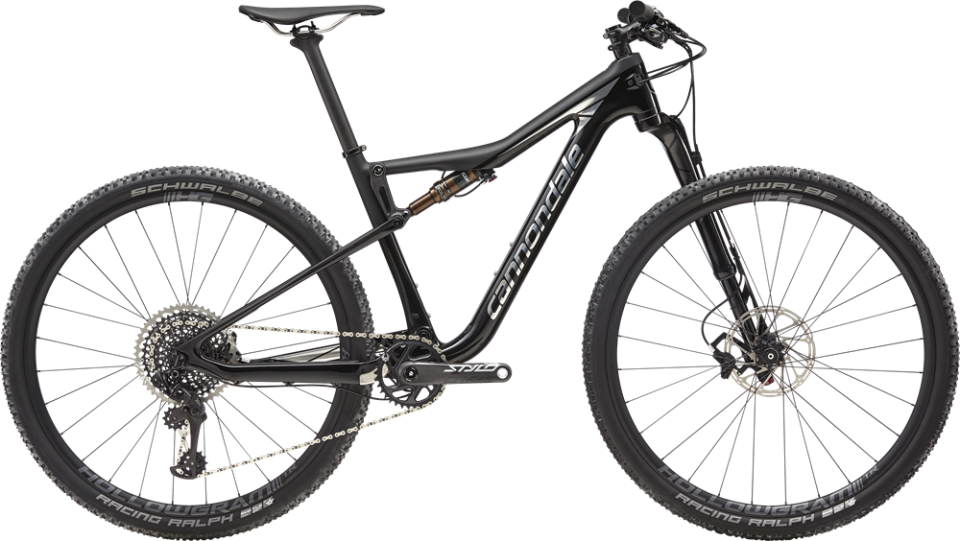
Cross-country races aren’t like they used to be. They’re tougher. More technical. Burlier. The Scalpel, which has been on the cutting edge of XC racing for years, has changed with the times. You’re still getting XC travel dimensions (100mm in the front and rear), but the bike also incorporates a slacker head tube angle and longer reach for better downhill handling, while a remote lockout and BallisTec Hi-MOD carbon frame make this bike a dream on the climbs. Models of the Scalpel-SI run from the high-end Hi-Mod World Cup ($10,500) to the more value-oriented SI-5 ($3,150) made with SmartForm C1 alloy.
Habit 4
Learn More
Price: $3,150
This popular trail bike was completely redesigned for 2019
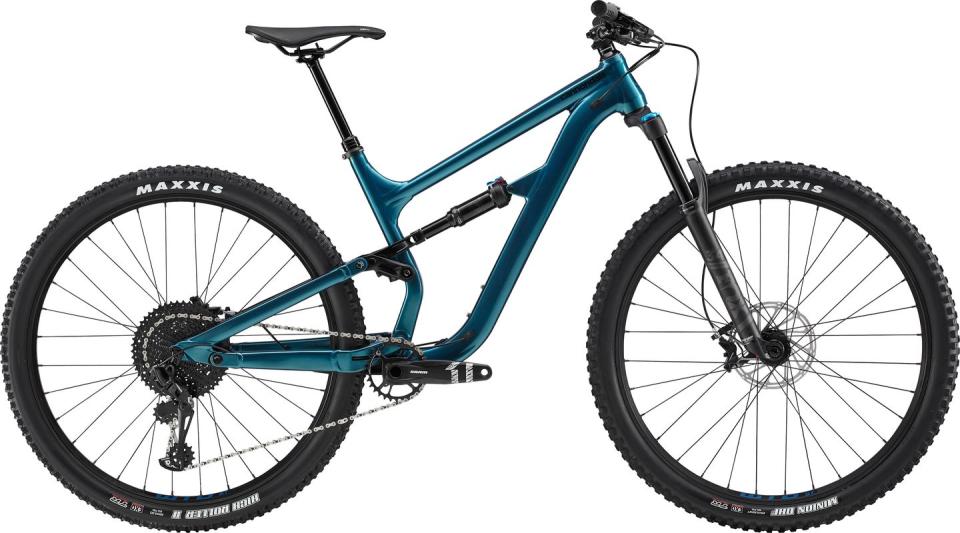
A bike for every trail? It’s a tall order, and probably one that can never be fulfilled, but the Habit comes pretty damn close. Designed to be your everyday whip, the newly redesigned Habit has 29-inch wheels, 130mm of travel front and back, and a 1x drivetrain with a super short chainstay for maximum traction. A wide handlebar and a dropper post round out the features, and the entire line focuses on “Proportional Response” suspension, which basically means the geometry is specific to the size, so pedaling, braking, and suspension is optimized for each model. Choose from the SmartForm C1 Alloy Habit 6 ($2,100) up to the BallisTec Carbon Habit Carbon 1 with Shimano XTR components ($7,900). Not down with going “big wheel?” Opt for the Bad Habit, which comes equipped with the same goodies, but has 27+ wheels.
CAAD Optimo 105
Learn More
Price: $1,255
An entry-level aluminum road bike with racing geometry
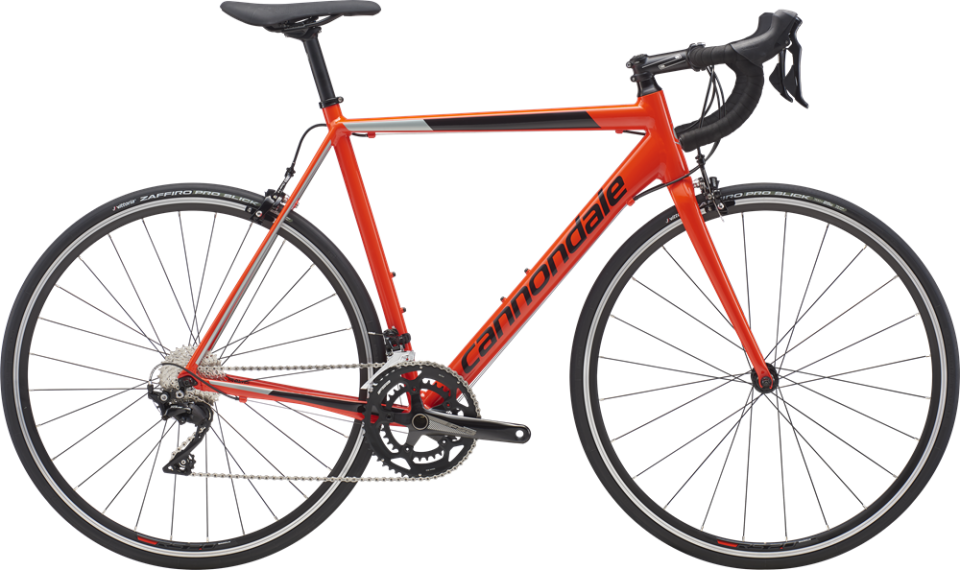
Cannondale made its name by building high-performance road bikes out of aluminum, and that tradition continues with the CAAD12 and CAAD Optimo, the latter of which is an entry-level racing bike with speed-inspired geometry and features pulled from the high-end SuperSix Evo. It’s SmartForm C2 aluminum frame is light and stiff, while “flex zones” in the rear triangle and fork absorb road chatter. The whole thing is dressed with Shimano 105. You’re gonna go fast without dropping a lot of money.
Trail 2
Learn More
Price: $1,575
An entry-level hard tail with confidence-building features.
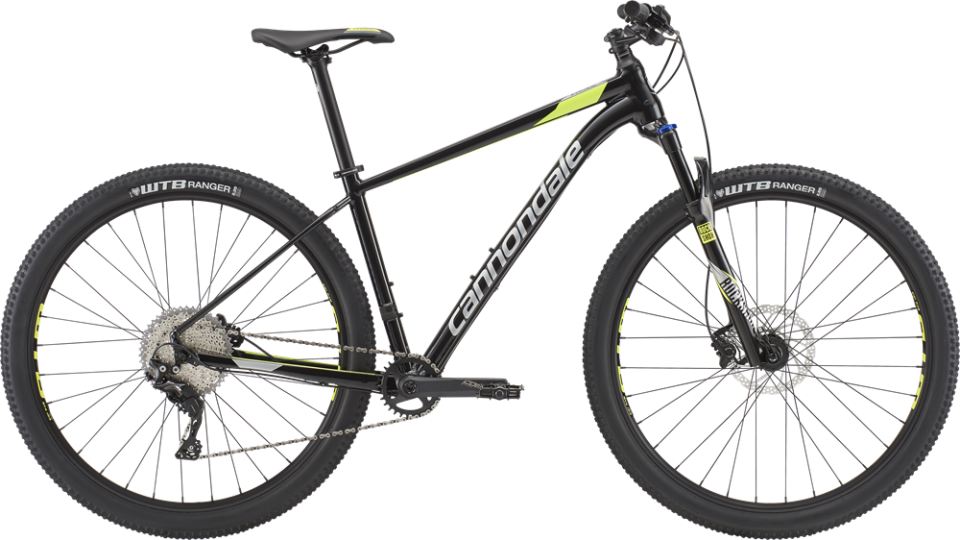
Let’s say you’re “dirt curious.” Just getting into mountain biking. You want a capable ride that won’t cost a fortune. The Trail is an entry-level mountain bike with a suite of features to give new mountain bikers confidence on singletrack. A short stem and wide handlebar increase control while a slack head angle gives you confidence on the downhill. Hydraulic disc brakes give you stopping power while a 1x drivetrain keeps things simple.
Bad Boy 1
Learn More
Price: $1,950
A good-looking urban commuter with a Lefty rigid fork
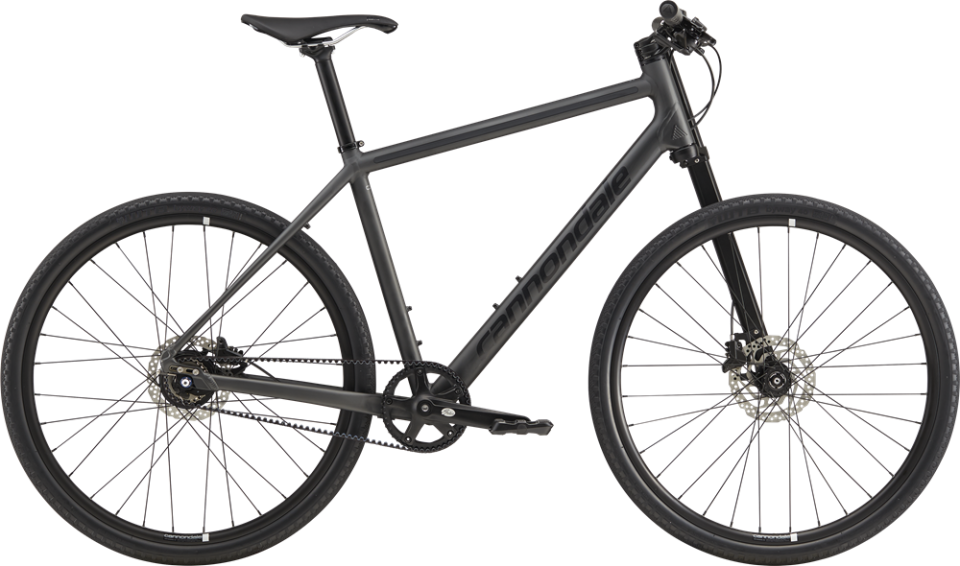
Is it wrong to be wooed by a bike’s looks? Not if it looks as good as the Bad Boy, a sleek urban commuter in matte black with an attention-grabbing Lefty rigid fork. Internal cable routing keeps the lines sleek, and integrated lights take care one of the most frequent questions commuters ask themselves: “Did I charge my lights?” There’s even a soft, reflective bumper on the top tube to protect the paint job when you lean the bike against a railing or street sign. That’s thoughtful design right there. Oh, and a fuss-free Gates Belt Drive.
('You Might Also Like',)

